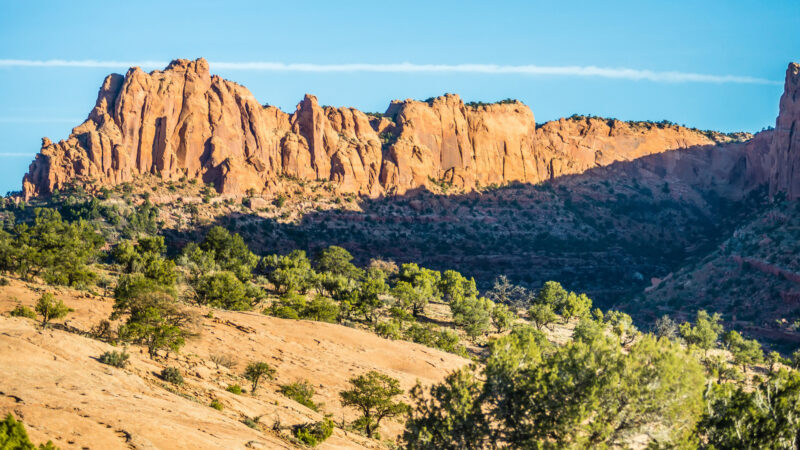Table of Contents Show
Arizona national parks are some of the most unique and enticing in the United States.
Arizona has much to offer visitors, from its arid desert atmosphere to its rich Native American history.
We’ve compiled our picks for the top 10 best Arizona national parks you need to see. Read on to know if you think our choices are worth making the trip.
How Many National Parks Are in Arizona?
When counting how many national parks reside either fully or partially within state lines, 22 different national park sites are in Arizona.
While Saguaro, Petrified Forest, and the Grand Canyon are the only three sites officially labeled as “national parks,” the remaining 19 sites are nationally ranked for their beauty and distinct nature.
Other National Park Service Designations in Arizona
Below, we will take an in-depth look at the top 10 Arizona national parks that you need to see, but we would be remiss if we didn’t take the time to list all of the sites you should make time to visit.
When traveling through Arizona, be sure to stop at Canyon de Chelly, Casa Grande Ruins, Chiricahua, Coronado, Fort Bowie, Glen Canyon, the Grand Canyon, Grand Canyon-Parashant, Hubbell Trading Post, Juan Bautista de Anza, Lake Mead, Montezuma Castle, the Navajo Monument, Old Spanish Trail, Organ Pipe Cactus National Monument, the Petrified Forest, Pipe Spring, Saguaro, the Sunset Crater Volcano, Tonto National Monument, Tumacácori, Tuzigoot, Walnut Canyon, or Wupatki.
Each site offers something different and memorable that will enrich your trip through the Grand Canyon State.
The Arizona National Parks You Need to Visit
Now that we understand a little more about the rich abundance of national sites within the state, you can see that narrowing down our top 10 favorite Arizona national parks was not easy!
However, we believe the following list will show you the best Arizona offers while allowing you a rich experience of the state’s vast terrain.
1. Grand Canyon National Park
We are starting our list off with perhaps the most famous national park in Arizona and one of the most famous in the world.
The Grand Canyon is located in the northern part of the state and includes more than 270 miles of the Colorado River. There are a total of 11 tribes that call the canyon home.
The views from the Grand Canyon stun and entice visitors from all over the world year-round.
Things to Do: The Grand Canyon is full of activities that are great for all ages. Perhaps the most popular activity for travelers is hiking the various trails and ravines.
Mule rides into the canyon are also available for those who wish to take a different approach to the site. Parking is available outside the canyon, and a free shuttle bus takes visitors to other trails and vantage points throughout the park.
Campsites are also available for rent throughout the park. Suppose you’re looking for a unique location for a destination wedding.
In that case, special permits are available to buy for those looking to say “I do” in front of the Canyon’s picturesque backdrop.
Pro Tip: Visiting the Grand Canyon should be on your bucket list! These tips will help you plan the perfect RV Trip to the Grand Canyon
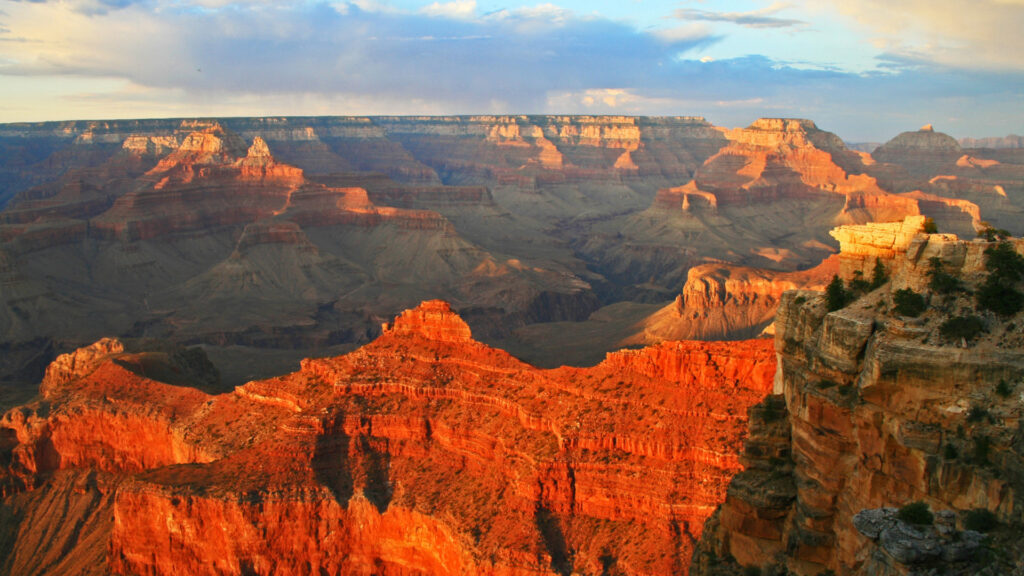
2. Saguaro National Park
Located in Tucson, Arizona, Saguaro National Park is home to the largest cacti in the United States.
These stunning and prickly plants are treasured icons of the American Southwest and are under national protection by the park’s staff.
Things to Do: Saguaro National Park has roads that allow visitors to enjoy the park’s beauty from their cars without stepping out of them.
The park also has several hiking and biking trails perfect for those exploring the park with their own hands. While no car/RV camping is available on site, tent camping is a significant draw for the more outdoorsy park visitors.
Each campsite is a hike-in site with the area closest to the trailhead located at 4.1 miles away.
3. Petrified Forest National Park
The Petrified Forest National Park in Arizona is located in the Navajo and Apache counties.
Spanning 346 square miles, the park gets its name from the abundance of petrified wood found within the park. Beautiful, eroded badlands make up a large portion of the park’s scenery and act as a big draw for visitors annually.
Things to Do: Hiking, backpacking, and camping are three of the biggest attractions within the park. Seeing the park by horseback is also an exciting option for those interested in seeing the park from a different perspective.
While you can explore the park independently, guided tours are also available. These tours can be an excellent option for those looking to learn more about the area’s history and natural resources.
Geocaching is also popular in the park, and leashed dogs are welcome on the property.
4. Glen Canyon National Recreation Area
Glen Canyon National Recreation Area is one of Arizona’s most popular water-activity destinations.
This recreational area covers over 1.25 million acres from Arizona to Utah. It also offers stunning views of vistas and contains a rich abundance of local flora and fauna.
Things to Do: Like many places on this list, Glen Canyon is popular with hikers and bikers.
Guided tours are available on request, and boat tours are available several times a day to give visitors the chance to experience the canyon from a different perspective.
Rainbow Bridge National Monument is found within Glen Canyon and is a popular spot for photographers and geology admirers.
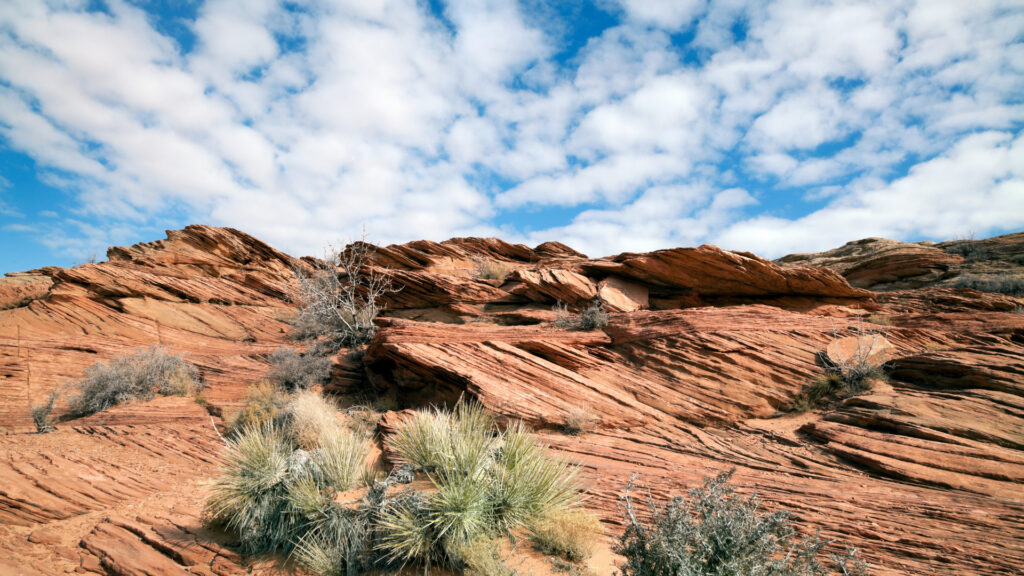
5. Lake Mead National Recreation Area
Lake Mead National Recreation Area is America’s first of its kind, making it a great addition to this list of Arizona national parks.
An impressive 1.5-million-acre area, this recreational area is home to several canyons, gorges, Lake Mohave and Lake Mead.
Hoover Dam is visible from the shores of both lakes. This National Recreation Area spreads up from Arizona into Nevada.
Things to Do: Due to its vast size and location on two prominent lakes, Lake Mead has a ton to offer its visitors. Some of the top activities within the area are swimming, fishing, hiking, and camping.
Several designated swimming areas and campsites dot the shorelines of both lakes, making this a popular summer destination. RV and tent camping is available within the park.
For those interested in learning a little more about the area before visiting, their website offers a rich virtual tour to show the vast history of the land.
6. Montezuma Castle National Monument
Once home to members of the Sinagua People, Montezuma Castle now stands as a testament to the resilience of a people facing harsh desert conditions.
Since its establishment as an Arizona national monument in 1906, the castle has offered an insightful look into desert life. Montezuma Castle is a fascinating visit with 20 rooms and built in a tall, ascending structure.
Things to Do: Montezuma Castle is a bit of a special mention on our list. While many other locations involve at least some small look into the area’s history, Montezuma Castle serves primarily as a reminder of a people and their unique struggles.
You’ll find a museum with over 100 artifacts, reminders of the people who once called the castle their home. While there are not many trails surrounding the area, there is still much natural flora and fauna to observe in the castle’s woods.
7. Sunset Crater Volcano National Monument
The Sunset Crater Volcano in Arizona is a dormant volcano located firmly within the state’s center.
Last erupting nearly 1,000 years ago, Sunset Crater now serves as a reminder of the resilience of life after destruction. Trees, flowers, and desert creatures now live and exist within the remains of the lava’s flow.
Today, you can still see active lava from the top of the volcano, making it a great addition to this list of Arizona’s national parks.
Things to Do: Around Sunset Crater Volcano National Monument, you can only hike on designated trails.
This rule is to protect the natural environment of the area.
While this may not seem as enticing as visiting a park with more open rules for exploration, there are five separate trails for visitors to choose from, each with its unique overlooks and views of the volcano.
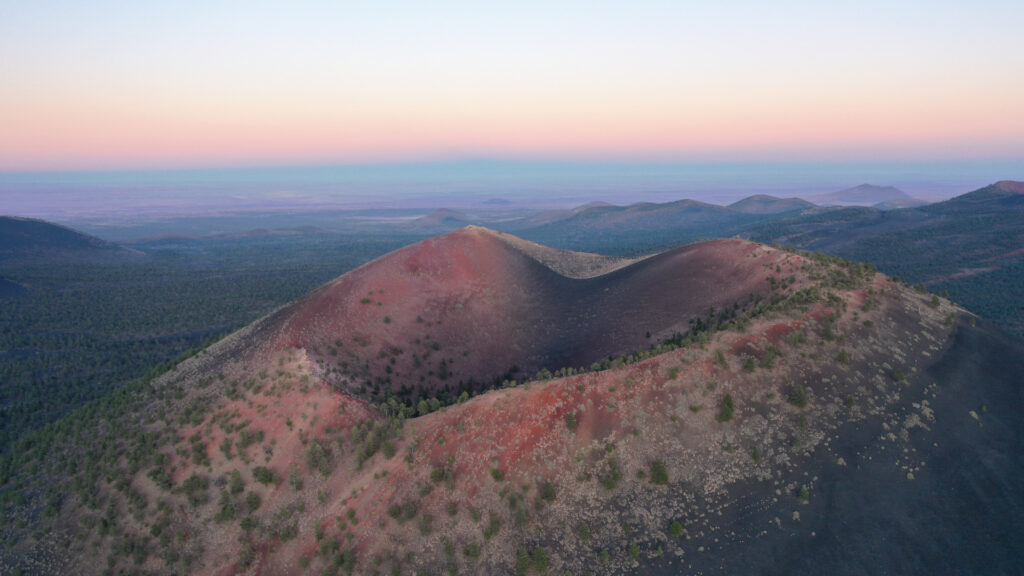
8. Walnut Canyon National Monument
Walnut Canyon is an exciting pick for our list. Like Montezuma Castle, this national monument gives a peak into the lives of those who came before.
You can see Pueblos built into the faces of the cliff dwellings within the canyon. This is stunning evidence of people’s hard work from hundreds of years ago.
Things to Do: Walnut Canyon in Arizona is on the smaller side of monuments on this list. A single, one-mile trail takes you around the canyon and gives an excellent view of 25 different ancient living spaces.
Though this park is not as large as others, it is a unique experience for those interested in learning more about the natural history of some of Arizona’s people.
Exploring around the monument away from the designated trails is strictly prohibited.
Pro Tip: You don’t need a campground in Arizona when you’ve got the desert! Bring your RV and camp at one of these Free Camping options in Arizona!
9. Tonto National Monument
Following in the footsteps of Montezuma Castle and Walnut Canyon, Tonto National Monument exists today as a reminder of a people who once inhabited the desert lands of Arizona.
This particular national monument focuses on the lives of those who occupied two Salado-style dwellings from 1,250 to 1,450 CE.
Today artifacts such as pieces of woven material, colorful pottery, and other various artifacts exist to showcase a long-forgotten way of life.
Things to Do: Curators and restorers of the monument work together to preserve the remains of a 700-year-old lifestyle. Because of this, it is open for limited hours during the day, from 8 a.m. to noon.
All guided and self-guided tours must begin by noon, or visitors will be unable to visit the dwellings that specific day. An exciting initiative by the Tonto National Monument is limiting artificial light at night.
This feature aids them in their mission to preserve the natural beauty of the night sky in an attempt to show it as it might have appeared to the area’s inhabitants so many years ago.
The final monument on our list is the Navajo National Monument. This monument also holds testament to lives lived long ago in the cliff dwellings of Betatakin, Keet Seel, and Inscription House.
The last known inhabitants of the cliff dwellings moved out around 1,300 CE. The Hopi, San Juan Southern Paiute, Zuni, and Navajo tribes made this area their home for centuries as the soft sandstone of the canyon gave way to cool alcoves.
Several of these dwellings can still be seen and explored today.
Things to Do: The only way to see the dwellings up close is to hike the Sandal Trail or schedule a tour, and guided cliff dwelling tours are available to visitors year-round.
Camping is available throughout the summer and fall though it is limited to dry tent camping only.
A junior ranger program is available for younger guests, emphasizing the importance of caring for the area’s natural history.
This program is open annually from June to July.
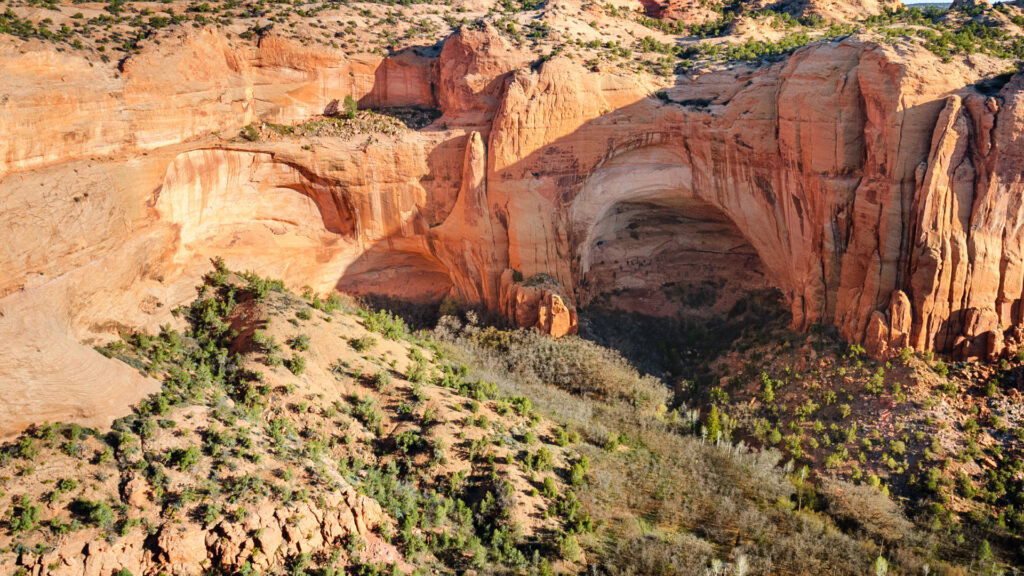
When Is the Best Time to Visit Arizona National Parks?
A few of these parks are open during the winter, and many national parks see heavy foot traffic during the summer.
The best time to visit Arizona national parks is in the spring and fall. Due to Arizona’s extreme desert temperatures, exploring the parks in the height of summer can prove dangerous to visitors.
Sudden snow storms in the winter make some of these sites extremely hazardous.
While temperatures may still be quite warm in the spring and fall, they are usually more comfortable for exploring the beauty Arizona’s national parks offer.
They are also less likely to be overcrowded as summer is the most popular time for many destinations.
Plan Your Trip to the National Parks in Arizona Today
Arizona is a beautiful state with much natural history and stunning geologic structures.
A shining example of what the southwestern part of the United States has to offer, Arizona national parks are a popular destination, and it’s not hard to see why.
Whether you’re interested in hiking the trails of a well-known tourist destination or find yourself intrigued by the history of a forgotten people, let Arizona show you what it has.
These national parks and so much more are just waiting for you to explore them!




